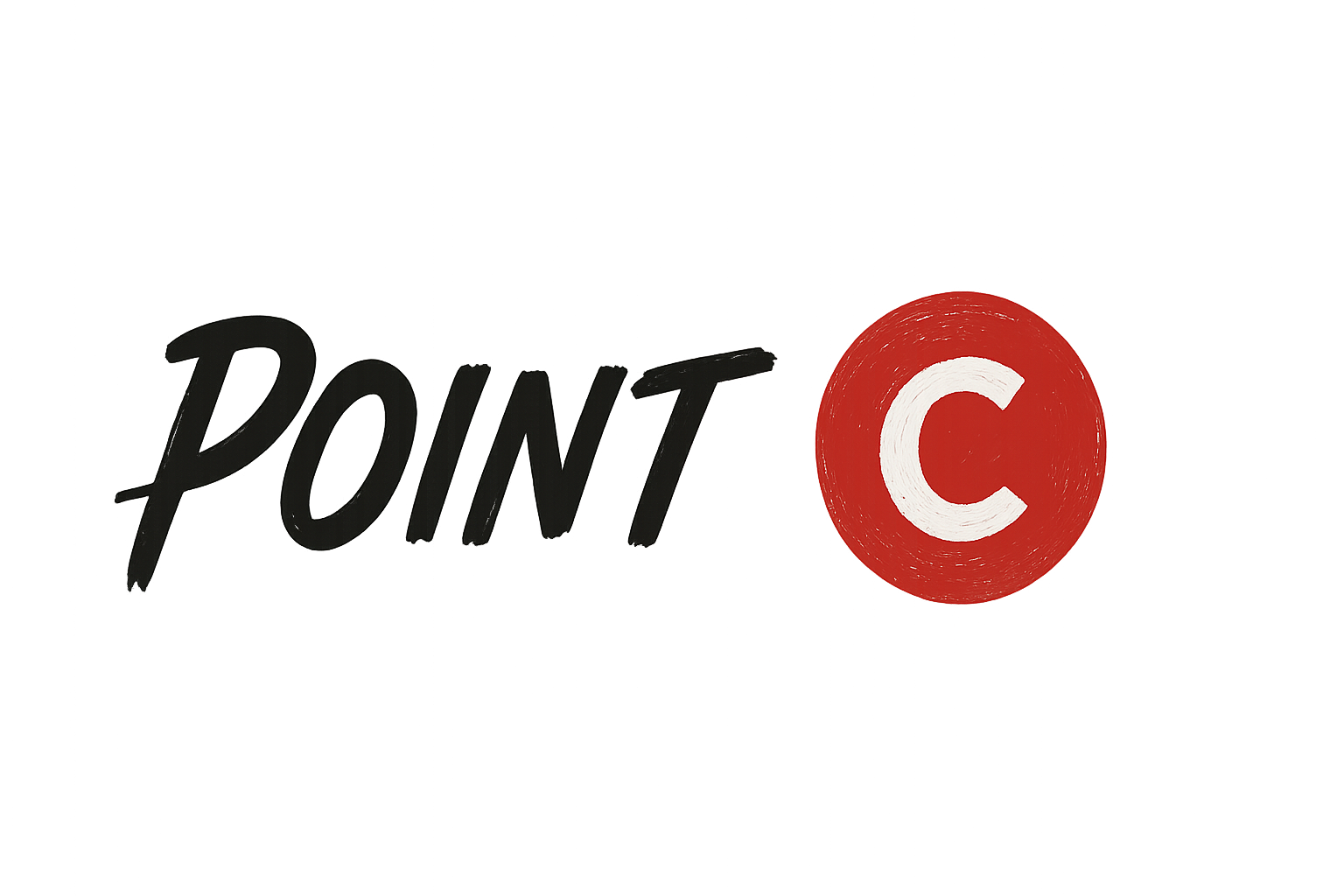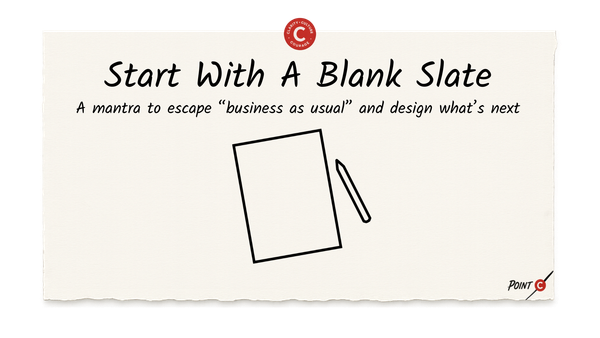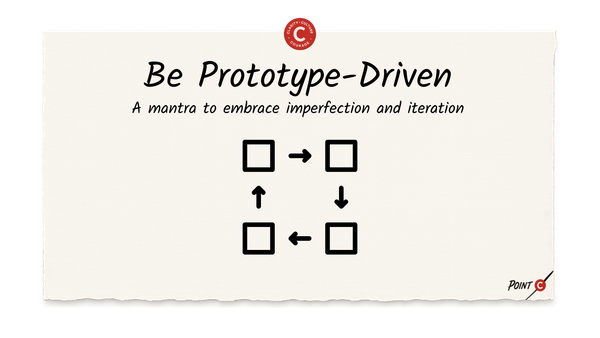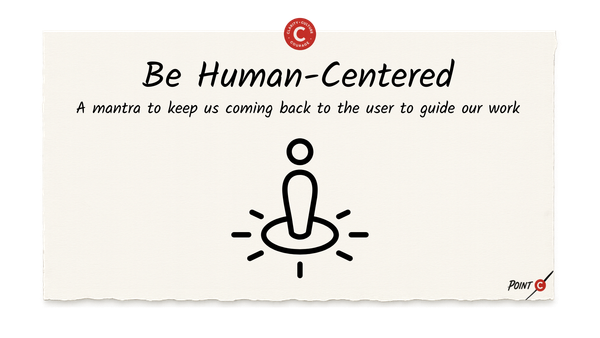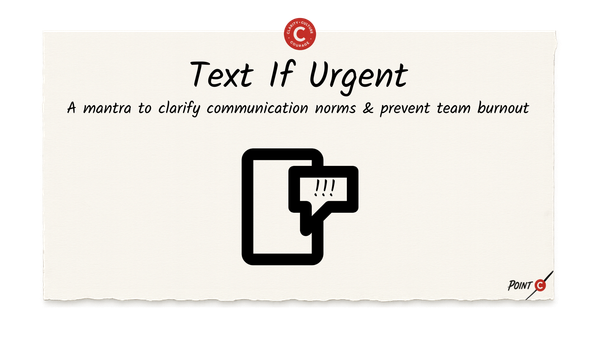The Selection Stack
A ritual to align stakeholders on success criteria early
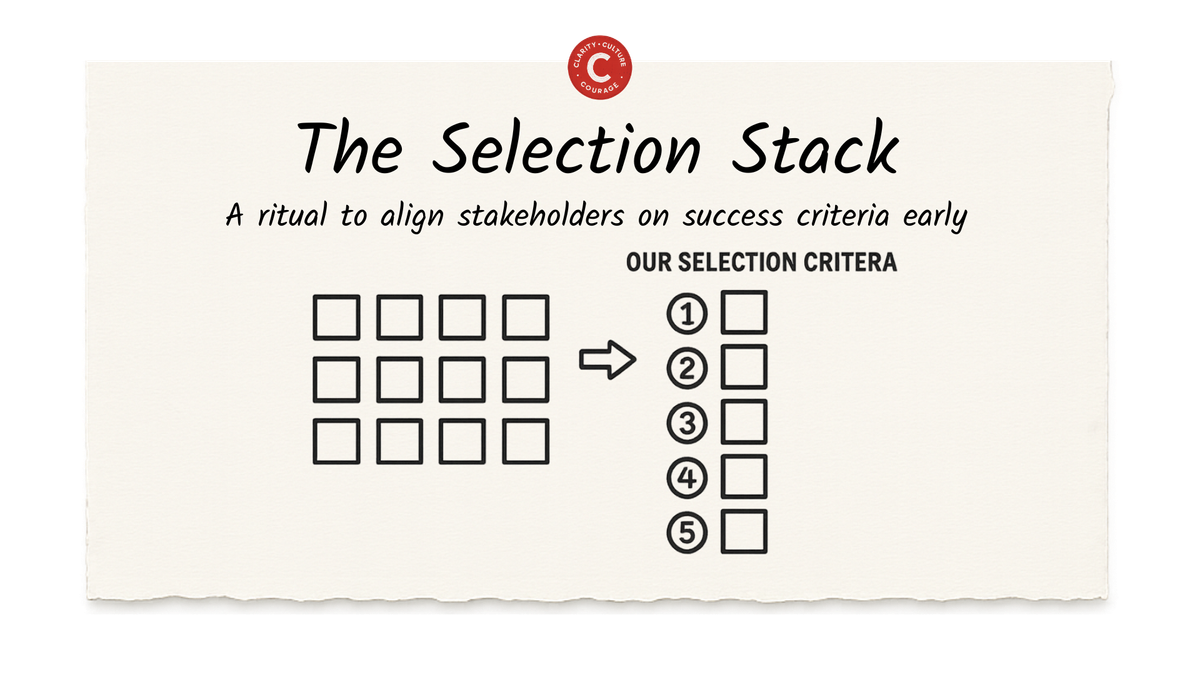
Welcome Back to The Idea Bucket.
Over the last two weeks, we’ve covered two essential tools:
- The Half Sheet — for making abstract ideas concrete
- The Idea Bucket — for collecting and sharing them visibly
By now, you might have a wall or Miro board filling up with concrete, imperfect ideas. That’s real progress.
But now comes the hard part:
How do you decide which ideas are actually worth pursuing?
This is where most teams stall — not because they lack good ideas, but because they never agreed on what “good” even means.
That’s where this week’s framework comes in.
Introducing: The Selection Stack
A simple ritual that forces clarity before commitment. It helps you align early on what success actually looks like — to you, your team, and your stakeholders.
And honestly? This should be the first thing you do.
Before the Half Sheets.
Before the Idea Bucket.
But I had to build this newsletter in some kind of order — and now that we’ve explored how high-performing innovation teams generate and share ideas, it’s the perfect moment to ask:
What does success actually look like — to the people who matter most?
Because the earlier you align, the faster you’ll move — and the fewer painful surprises you’ll hit later on.
So make the investment now. Then you can sprint.
What Is The Selection Stack?
The Selection Stack is a structured six-step ritual that gets everyone aligned on what success looks like before you start evaluating ideas.
It results in a force-ranked set of selection criteria — the criteria you’ll use to evaluate the future, yet-to-be-discovered ideas you’ll generate.
Step 1: Flare — Generate Selection Criteria
Start solo. Set a Time Timer for 30 minutes. Grab Post-Its (or open Miro) and brainstorm:
What are all the possible ways I might evaluate whether this project is a success?
Why are you doing this in the first place?
When we have to make a Go/No Go Decision on this project, what will make or break it?
Think broadly across categories:
- Financial return
- Mission alignment
- Team passion
- Trends and market forces
- Speed to execute
- Risk profile
- Team strengths
- Company assets to leverage
- Strategic relevance
- Scalability
- Ethical considerations
- Company Politics
- The Innovator' s POV (Are we a disruptor or an incumbent?)
This is a flare. Get everything out — no judgment.
Step 2: Focus — Force Rank The Criteria
Now the hard part: stack your Post-Its from most to least important. No ties. No “they’re all important.” Only one can go at the top.
The power of this step isn’t just the order — it’s the why behind the order. Say it out loud. Write it down. Reflect on what tensions or surprises arise as you rank.
Step 3: Prototype in Parallel — Invite Others To Create Their Stacks
Ask your teammates to do their own Flare and Focus exercises — separately.
This preserves original thinking and turns prioritization into an empathy exercise. It reveals what each person values before groupthink kicks in.
(You can invite stakeholders to do this too, but if that feels like too much, don’t worry — we’ll engage them in Step 5.)
Step 4: Test — Share With Your Team
Once everyone has their stacks, come together and share.
Each person explains their order and reasoning. But this isn’t about persuading. It’s about listening.
Ask:
- Where are we aligned?
- Where do we diverge?
- What tensions are surfacing?
- What are we willing to trade off?
- What do these criteria even mean? Can we be more concrete?
This is where real alignment happens. Prioritization always reveals values.
Step 5: Validate — Run An Empathy Interview With A Stakeholder
Bring your stack to a key stakeholder. Frame it like this:
“We’re just getting started on this project, and I want to fail fast on expectations. Here’s a rough prototype of how I’m thinking about success. What’s your reaction? How would you reorder this? What’s missing?”
Lay out your Post-Its. Hand them a few blank ones. Give them a Sharpie.
Let them mold the clay you’ve put before them — and learn from how they shape it.
This isn't a meeting. It's stealth user research. You’re not trying to convince. You’re trying to learn.
And most stakeholders? They’ve never forced themselves to do this. They often don't know what they'd prioritize until they see it reflected — or challenged.
That’s the point.
Step 6: Iterate — Refine The Stack
Take what you learned and revise your Selection Stack. Then test it again with another stakeholder. (And don’t be surprised if their priorities are completely different.)
You’re not aiming for consensus. You’re building shared understanding — while it’s still safe to do so.
The Power of the Selection Stack
Most teams don’t fail because they chose the wrong idea. They fail because they never got clear on what success meant — to the people who mattered most.
The Selection Stack helps you make aligned decisions. And once you have that alignment, your team can run — empowered by a concrete, tested, shared definition of success.
Here’s what it unlocks:
1. Early Alignment on What Matters Most
You uncover what your team and stakeholders actually care about — often before they know it themselves.
2. Faster, More Confident Decision-Making
Once your Selection Stack is clear, your team has clear lanes to run in. You’re empowered to figure out the outcome — but you know what criteria it has to meet.
3. Fewer Late-Stage Surprises
How many times have you been halfway through a project only to hear:
“I just assumed this would generate revenue…”
“This doesn’t feel mission-aligned to me.”
Those aren’t surprises. They’re signs your Selection Stack never existed — or was never shared.
4. Clarity Without Premature Convergence
The Selection Stack keeps you solution-agnostic. You’re not picking favorites — you’re defining what the winning idea must serve.
It’s the perfect companion to the Idea Bucket. You’re not judging based on gut feel — but on a clear, pre-aligned definition of success.
A Real Example: Why VCs Say No
I’ve seen countless entrepreneurs pitch thoughtful, well-designed businesses — and leave confused (and angry) when VCs passed.
Here’s what they didn’t realize:
For most venture capitalists, the first selection criterion is this:“Do we believe this could be at least a $1 billion company?”
Even if it’s a solid $20M business, they’ll pass. And they should. That’s their fiduciary responsibility.
That doesn’t mean your idea is a failure. And it doesn’t mean they’re jerks (even if they act like it).
It just means you’re misaligned. You are either optimizing for the wrong criteria — or targeting the wrong audience.
Your real risk isn’t picking the wrong idea. It’s not knowing how key stakeholders will evaluate success — until it’s too late, when you’ve already run out of time, budget, or trust.
The Selection Stack helps you fail fast on expectations — so you can succeed sooner on outcomes.
Your Challenge This Week
Try the Selection Stack now — especially if the decision still feels far off.
Step 1: Flare
Pick a real project with real stakes.
Brainstorm 10+ criteria you might use to judge success. Go wide.
Step 2: Focus
Force rank your Post-Its. No ties. Just tradeoffs.
Ask:
- If I could only get one thing right, which would it be?
- What would I be willing to trade off?
- Where are the tensions as I reorder these?
Step 3: Validate
Run an empathy interview with a stakeholder. Lay out your criteria and ask:
- What’s your reaction?
- How would you reorder these?
- What's missing?
Listen closely for why they value what they value.
Step 4: Iterate
Reflect:
- Where were we aligned?
- Where were we misaligned?
- What might have surfaced too late — if we hadn’t done this?
Then revise your stack.
Share What You Learned
You just prototyped your selection criteria — and likely avoided months of wasted effort.
I’d love to hear what surfaced.
What unexpected insight did you uncover?
What did you learn that might have killed your project if you hadn't done this ritual?
What feelings did you have before the test? What feelings did you have afterwards?
Reply to this email, comment below, or reach out at theideabucket@pointc.co.
Next Week
Once you’ve aligned on your criteria, the next step is making them persistent.
Next week, I’ll share a tool I use with every team in my programs:
The Venture Design Rubric
A concrete rubric — tied to a recurring team ritual like a Design Review — is the key to an innovation leader’s greatest challenge:
Upholding high standards while preserving psychological safety.
See you then.
About This Newsletter
The Idea Bucket is a weekly newsletter and archive featuring one visual framework, supporting one act of leadership, that brings you one step closer to building a culture of innovation.
It’s written by Corey Ford — executive coach, strategic advisor, and founder of Point C, where he helps founders, CEOs, and executives clarify their visions, lead cultures of innovation, and navigate their next leadership chapters.
Want executive coaching on this framework or others? Book your first coaching session. It's on me.
